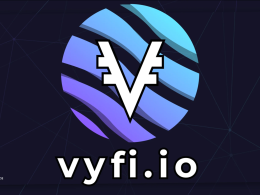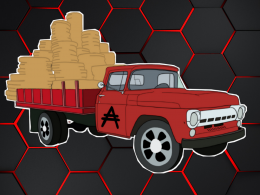Project catalyst is a significant initiative that brings on-chain governance to the Cardano blockchain. It supports innovation across the ecosystem while allowing the community to self-determine its priorities and capitalize on these growth opportunities. When participants submit their ideas to the Catalyst community, their proposals go through a refinement process where their feasibility, impact, and auditability are assessed by community advisors.
During the assessment process, community advisors spend a lot of their time shifting around IdeaScale and multiple spreadsheets to evaluate all projects. Most of this work is performed manually. A team of developers has put forward a fund 5 proposal in the distributed decision-making category that aims to build a solution that improves the project evaluation process. The goal of the project is to automate and improve the efficiency of work done by both project proposers and community advisors during the assessment and review processes.
The Team
The team behind the project consists of four full-stack developers and Cardano enthusiasts who have served as community advisors since Fund 3. They also built and implemented the yellow/red card system for reviewing assessments. You can check through their official GitHub account for more insights into the work under development for this project.
Overview of the Current Process
When idea submitters finalize their proposals on project catalysts, they go through three main phases before community voting begins. These are:
- Community Advisors (CAs) assess the impact, feasibility, and auditability of the proposals. For each of these three categories, the CAs rate the project on a scale of 1 to 5 and provide a rationale for the rating.
- Project proposers review the CAs assessments and flag low quality or unfair assessments to be checked by veteran community advisors (VCAs).
- VCAs review assessments on all proposals, starting with those flagged by the project proposers in the previous phase.
During the three phases, there are a couple of limitations that make the review process inefficient. First, CAs navigate through IdeaScale manually, looking for proposals to assess. During this process, some proposals do not receive the minimum number of CA reviews required, as experienced in Fund 4. They also have to search for the least assessed proposals, which is inefficient and time-consuming.
The assessment reviews by CAs and VCAs are logged into an Excel sheet. While spreadsheets serve the purpose, there is little coordination during this phase. As seen, there is an imbalance of assessment reviews by VCAs; where some assessments receive lots of reviews while others receive close to none.
Additionally, the number of projects submitted to Catalyst is increasing exponentially. Both CAs and VCAs might get overwhelmed with the number of proposals they should assess and review. This makes it imperative for the Catalyst community to improve the current experience.
Streamlining the Catalyst Experience
The minds behind this project are looking to solve the above problems by building tools that will improve coordination and status tracking between CAs and VCAs. Here is a quick overview of the three tools set to make the proposal assessment and review process easier.
- CA Tool – Automatically suggests proposals for assessment by CAs, based on the challenge preference and number of assessments on the proposal.
- A Proposer Tool – Allows idea submitters to go through all the assessments, set them as ‘checked’ or flag them if necessary.
- A VCA Tool – Automatically suggests assessments to be reviewed by VCAs based on their filter choices and the least reviewed assessments.
The team has already created a plan for each tool and is working on designing and building prototypes. The next section dives into the technical specs explaining how the three tools will work.
CA Tool
The CA Tool is a simple single-page application (SPA) where community advisors can be assigned proposals to evaluate and keep track of assessed proposals. All project proposals that should be assessed will be preloaded in the tool using an export functionality provided by the Project Catalyst Team. The CA will be able to filter proposals by categories and receive suggestions for proposals that require their attention.
As CAs as the proposals, the tool will automatically update the number of assessments on each proposal, so that CAs can be notified on projects with few assessments. Upon reviewing a proposal, the CAs will use the “mark as reviewed” button to keep track of their assessments and confirm that their reviews were submitted correctly.
VCA Tool
The VCA Tool will also be a SPA designed to provide a better experience and work in parallel with the regular Google sheets review process followed in Fund 4. The tool’s workflow begins with VCAs importing the Google sheet they receive from Project Catalyst to the tool. At this point, VCAs can view all CA assessments right from their browser. The “assessments list view” allows VCAs to apply filters so they can view proposals with low reviews or no reviews. They can also filter the proposals based on their average rating, whether they are flagged by proposers or not, and many more options.
These advanced filters will allow VCAs to dig into CA assessments and review them with the yellow/red card criteria. The tool will also allow users to view how many VCA reviews a proposal has received. This will create more transparency and coordination in the review process. When the VCA has successfully reviewed all CA assessments, they can then export the file and share it with the catalyst team.
Proposer Tool
The proposer tool is built upon the same concept as the VCA tool but with a few exceptions. Every idea submitter will receive a file containing all CA assessments on their proposal. They will then load the file into the tool, where they can check the assessments and flag them if needed. Once done, they can export the file to share their feedback with the catalyst team.
Project Roadmap and Budgets
The project owners are currently working to have the prototypes of these tools operational during fund 5. You can have a look at the design user flow, interface, and overall experience on this Miro wireframe. Once the prototypes are ready, the team plans to onboard some community members, including CAs, VCAs, and proposers to the solution. This way, they will be able to acquire user feedback and improve the solution before rolling it out to the larger community for use in subsequent funding rounds.
From a budget perspective, the team is requesting a total funding of $4600 to make this project a reality. The requested funds will be spent as follows:
| Task | Budget |
| Design user flow and interface for all three tools | $1000 |
| CA Tool Frontend Development | $800 |
| VCA Tool Frontend Development | $800 |
| VCA Tool Backend Development | $200 |
| Proposer Tool Frontend Development | $600 |
| Project admin and management | $1400 |
| Total | $4600 |
Putting it All Together
Project Catalyst has always been about creating a space for the Cardano community to innovate, collaborate and become successful together. Every contributor has a voice, and we can push more power to the contributors by ramping up the refinement process applied to their projects. Investing in such a system will improve the overall project assessment and review process, thereby ensuring all ideas in the ecosystem are addressed.
For more information about the catalyst community tools project, please look at their official GitHub or check out their Fund 5 project proposal as submitted to Project Catalyst using the link below.
https://cardano.ideascale.com/a/dtd/Catalyst-Community-Tools/350981-48088










